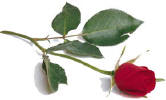|
A LESSON IN HOME
DECORATING!
Accessorizing with Style
Thank you to Monica Jeffries and Loretta Reese for sharing...
We all like to be surrounded by the things
we love, and accessories more than anything else add personality to a room.
They can amazingly transform your house into a home, and without needing a
degree in interior design, just by following a few basic principles for
arranging accessories, you can create visual effects, and define your
personal style that makes your home inviting to guests and comfortable for
you and your family.
Consider these key elements when
accessorizing your home:
Wall Décor
Framed art - can immediately
establish or change a room’s mood.
Mirrors - create an illusion of space and dimension, and
reflect light in a room. Position them to reflect something beautiful &
interesting.
Shelves - establish another plain and additional space in a room, and
add texture and dimension to your walls.
Sconces - are a source of mood lighting, and help balance other wall
décor items.
Accessories
Items such as figurines and collectible
plates are purely decorative and create visual interests. (Husbands
and children don’t count)
Objects like vases, clocks, frames, bowls
& baskets, accent lamps, candle holders, etc are decorative and
functional. ie: vases hold flowers, accent lamps provide soft lighting,
baskets organize clutter, etc.
Faux Flowers and Greenery
Floral arrangements, swags, planters and
trees add life to any room. They also can hide an unsightly view.
These should be placed at three different levels in a room:
1. At the floor level the use of
potted artificial or live trees soften any corner.
2. The table level is an ideal area for an arrangement of flowers
using a container like a vase or an urn.
3. Adding faux flowers or greenery in the form of a swag or cascading bush
on shelves or above wall décor create a complete, unified, and
balanced look.
Candles and Fragrances
Add ambience to any room with candles and
fragrances. Candles set the tone and the mood of a room and fragrances
stimulate the senses. Consider the many different sizes, colors and textures
when adding this element to your room. When grouped together, place largest
candle to the back and smaller ones to the front. Candle trays are great for
taking the guess work out of how many are too much. Candleholders purchased
as a set of two or more are usually different heights and sometimes textures
which makes finding the right scale and balance are achieved easily.
STYLE QUIZ
Knowing what you like and dislike, is the
first step to defining your decorating style. Do you love Grandma’s silver
tea service or the Lucite & chrome clock you acquired from your husband’s
bachelor days? There are no wrong answers!
1. Your favorite colors are:
A) Greens, blues, soft yellows and
neutrals.
B) Deep, rich hues like burnished gold, wine red and cobalt blue.
C) My favorites change all the time.
D) Neutrals are nice but sometimes I need a pop of bold color to set them
off.
2. If you could replace all of your
flooring you would choose:
A) Hardwood with needlepoint or hooked rugs or jute & sisal coverings.
B) Stone or marble with Oriental rugs.
C) A little bit of everything—tile in the kitchen, hardwood in the
bedroom and living areas, colorful
linoleum for the kids’ rooms.
D) Acid-etched concrete, rugs with artful, geometric designs and
materials like cork and bamboo.
3. You consider the best-dressed window to have:
A) Simple panels and sheers, maybe with embroidery or beading.
B) Pinch-pleated draperies with wood rings and a traditional rod.
C) Roman shades in neutral materials.
D) Nothing- the windows and view are pretty enough.
4. Your favorite accessories are:
A) A combination of family keepsakes, framed botanicals and lots of
candles.
B) Wrought iron candlesticks, burnished metal mirror frames and pillows
trimmed with opulent fringe.
C) Flea market finds and garage sale objects you’ve transformed into
something else.
D) Striking art pieces—anything that features an interesting shape or
material.
5. Your favorite fabrics for upholstery and window treatments are:
A) Machine washable cotton slipcovers featuring florals, stripes or
checks and embroidered linen with a
pinch of chintz.
B) Toile, leather, brocade, damask, tapestry and paisley.
C) Chenille, denim, and velvet.
D) Ultra-suede, silk and sheers.
6. If you could furnish your home from one store, it would be:
A) Shabby Chic by Rachel Ashwell
B) Pottery Barn
C) The local vintage furniture store
D) Crate & Barrel
7. Your bedroom walls are:
A) Painted and stenciled in light pastel shades.
B) A dark color with textured finish.
C) A neutral color with a glaze treatment.
D) White, light gray or light tan.
8. You like furnishings that are:
A) Casual pieces in either their natural finish or painted white.
B) Large scale, antique dark wood pieces with interesting iron accents
and carved ornamentation.
C) A mixture of many styles.
D) Straight lined pieces in light wood finishes and tables with acrylic
or glass tops and metal legs.
9. The outfit in your closet you reach for the most is:
A) A white linen shirt and khakis.
B) A sweater set with tailored pants.
C) Jeans and a funky embroidered shirt.
D) White or tan tee with black pants.
10. Your ideal vacation would take you to:
A) A cottage at the beach or a cabin in the mountains.
B) The hills of Tuscany or Provence
C) All the flea markets in Paris.
D) The finest hotel in New York City or London for a week long shopping
spree.
If you answered mostly:
A) Country Cottage - You like cozy and comfortable. A little bit
of frill, a bit of fun and a whole lot of old fashioned charm is this
welcoming style. Garden inspired hues, rustic furnishings, and floral
fabrics are a staple of this relaxed look. Slip-covered sofas, white washed
furniture and cherished family accents or flea market finds form the base of
this casual, comfortable style.
B) Old World Style - Its elegance and opulence for you! The Old
World look is a myriad of European styles, but at the heart of it is a
palette of deep, rich hues like wine red, midnight blue and forest green, a
combination of natural materials like limestone and tile, substantial
furniture pieces and a plethora of texture on the walls, fabrics and
floors. If you usually lean towards a more traditional design, this
timeless style is for you.
C) Eclectic - Almost anything goes. An eclectic design isn’t
necessarily a mish-mash of furnishings----it’s more of a purposeful mixing
and matching of pieces according to color, form, and finish. It’s a way to
incorporate your family antiques and trend new pieces under one roof while
keeping a cohesive look. The color palette can range from a backdrop of
tone-on-tone neutrals to vivid hues—it all depends on what makes you feel at
home.
D) Contemporary - Sleeeeeek and Chic! Let go of the fringe, fussy
window treatments and excessive ornamentation --- Contemporary design
sometimes relies on what’s missing rather than what it contains. The pieces
that are lucky enough to make it into a spare, modern interior will have
clean, straight lines, modern finishes like brushed aluminum and sumptuous
fabrics like silk and suede. The color palette can range anywhere from
all-white to a pop of brights or simply neutrals paired with neutral
materials. And don’t discount what natural light can do for the design ---
with rays casting shadows and highlights; you’ll be in for a Zen-like
experience.
Whether you are looking to create a fabulous wall arrangement or a
vignette, Balance and Placement can transform a barrage of knick-knacks into
a treasured collection.
Balance -
Balance keeps arrangements from looking lopsided. They can be symmetrical or
asymmetrical. Symmetrical is perfectly equal on both sides. Easiest to
arrange, and creates a more formal setting. Asymmetrical balances
pieces of different shapes and sizes by visual weight of the objects and
creates a more casual setting.
Placement -
Create Groupings - A collection has greater impact when grouped
together than scattered around the house. Display objects together in odd
numbers, a group of 3 or 5 works well. Place similar objects together by
grouping according to color, shape, and design.
Alternate Heights - Objects varying in heights add visual interest.
Elevate small prints, plates with pedestals or stands to highlight their
presence.
Create Depth - Zigzag/alternate pieces from back to front. Place
three items in a triangle with the tallest item in the back. You can even
overlap triangles when you have more than three objects.
Alternate Textures - Mix shiny finishes with flat ones or hard
objects with softer ones.
Find the Focal Point - Arrange items around one major object to
center the grouping.
Using balance and placement with framed art and wall arrangements
Wall art is an underestimated design accessory probably because most people
don’t know what to do with their pictures to get the total effect in the
room. Try these helpful tips:
- Let the shape of your walls influence the arrangement.
- Combine pictures and objects in assorted sizes.
- Vertical arrangements add height to a room.↑
- Horizontal arrangements widen a room.↔
- Rectangular or oval arrangements work well in an area above
a mantel or sofa.
- Circular arrangements add interest to prints hung in an
entryway.
- Hang art 6”-9” above furniture and sofas. (Artwork placed
too high appears to be floating)
- Avoid placing small framed art over a large piece of
furniture or very large framed art over a small
piece of furniture.
Our Wonderful World of Color
Two simple solutions to finding a color scheme and using it...
WHITE…..WHITE…..WHITE…..that’s the color for me. It goes with everything.
AAAAAHHHHH!!
Don’t be afraid to use color. It’s all around us in our world, and it’s
harmonious!
The lack of confidence in picking the right color combination and how to
distribute them properly around the room is the top reason for not using
color in our homes. While we can answer one of the most common questions,
“What’s your favorite color?” without blinking an eye, we are uncertain on
how to combine our favorite color with others to create a color scheme for
decorating.
With the human eye seeing more than 15 million colors, how do you pick
the right color scheme?
A trained and experienced interior designer will undoubtedly use their
knowledge and understanding of one of their most valuable tools, the
color wheel.

A wheel of 12 colors consisting of:
Primary Colors- Red, Yellow, & Blue (no other colors can be mixed
together to create these three colors)
Secondary Colors- Orange, Green, & Violet (these are equal parts of
two primary colors mixed together)
Tertiary Colors- Yellow-Orange, Red-Orange, Red-Violet, Blue-Violet,
Blue-Green, & Yellow-Green (these are a combination of a primary color and
one of its neighboring secondary color)
Knowing where the colors lie on the wheel, you can then combine them by
using one of these most commonly used color schemes.
Monochromatic- Using the light and dark values of one color.
Complementary- Using two colors that lie opposite of each other on
the color wheel.
Triadic- Create a color triangle by using three colors that are equal
distance apart on the wheel.
Analogous- The use of two to six colors next to each other on the
wheel.
As you can see, the color wheel is a scientific, no fail solution to finding
the perfect colors, BUT…………………….there is a less time consuming, and simpler
solution. Are you ready?
If you have decided to decorate and whether you are starting from bare
bones, completely redecorating, or just doing a mini makeover, choosing
an ACCESSORY as your INSPIRATION will always give you the perfect color
combination!! Use framed art (which is my favorite to use),
candleholders, a floral arrangement, or a decorative plate. You ask why?
Manufacturers of decorating accessories have an arsenal of designers using
their talent and knowledge of tools, such as the color wheel, creating items
like framed art, decorative bowls, and candleholders. And by using these
ready made color combinations in these items you will have the confidence in
creating a designer look for your home. Now, how much of what color do I use
where?????
How much of what color do I use where?
60/30/10 Rule
Professional designers use the 60/30/10 rule to
solve this problem. It is used to divide color combinations into
percentages. Think of a man’s suit in relation to color in your room. The
dominant color (60%) comes from the jacket and slacks (your walls). The
secondary color (30%) comes from the dress shirt (upholstered items), and
the accent color (10%) comes from the tie (accessories). The tie, to me,
always makes the suit, and can say a lot about its inhabitant. It’s a sliver
of fabric that can say, “I’m conservative” or “I’m very funny” or “I ate
pizza for lunch and that orange spot on my tie is the grease drip.” JUST
KIDDING!! The same is true for your accessories. So use them at least three
times, but no more than seven, whether using a single item or a grouping of
similar accent pieces. They can make a visual impact and define someone’s
personality without being overstated.
So, how do I incorporate this into my Celebrating Home business?
In the age of hybrids & crossovers that can get 50 miles per gallon and make
dinner reservations at the touch of a button, and cell phones that can play
music and send a photo of the man with pizza grease all down his suit (ha
ha), more and more people are looking for products with multi-functionality
and versatility. Customers desire this same added value in products for
their home.
Showing customers how to properly arrange candleholders on a sideboard, and
then being able to transform them into vases for a new look on the mantel,
gives the products and your parties additional value. Carrying these items
in your kit and showing the versatility will help increase your sales and
bookings.
Transforming a house into a home can be fun and rewarding by
combining some basic decorating principles of color, balance & placement,
with beautiful & versatile Celebrating Home products.

|


